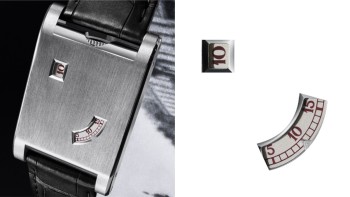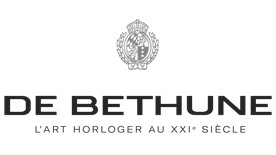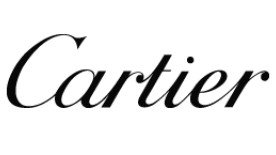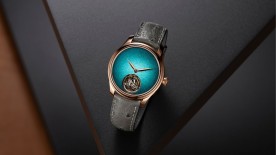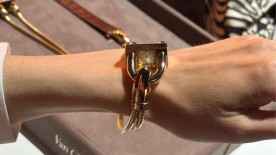A guichet refers to any opening in a watch dial or case that reveals information. The most common example is the date window: a small aperture through which the date disc can be read, offering a snapshot of the current month’s progression.
Typically, a guichet watch watch refers to a timepiece that shows the time through windows rather than traditional hands. Instead of moving hands, these watches use counters or discs, creating a more graphic, minimalist, and almost architectural reading of time.
The earliest known use of a time-telling guichet watch dates back to 1830. It was created by Antoine Blondeau, the King’s watchmaker, for Louis Philippe I. This display style was popularized by Audemars Piguet in 1921 and later by Cartier in 1928 with its iconic Tank à Guichets.
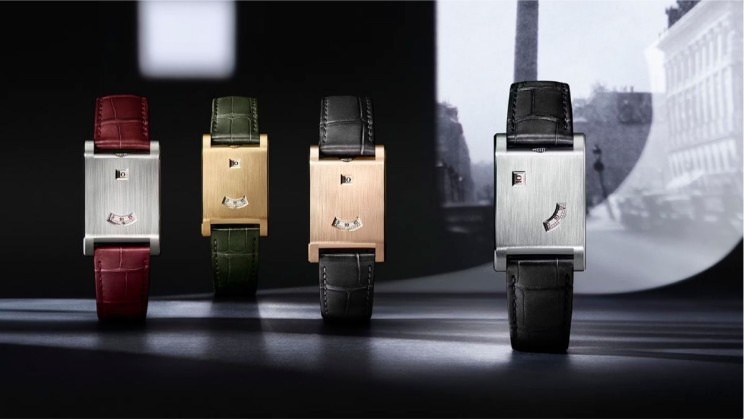
Nearly a century later, this display is making a strong comeback. These watches offer a new, more intuitive, yet boldly designed way to read time. They appeal to lovers of mechanical complications and to those seeking watches with distinctive character. Here are six modern interpretations that bring this unique horological language back into the spotlight.
Cartier Tank à Guichets
An icon of Art Deco design, the Tank à Guichets returns as part of the Cartier Privé collection, nearly 100 years after its debut. Available in rose gold, yellow gold, and platinum, this reissue stays true to the 1928 original. The platinum case features only two apertures: one for the jumping hour and another for the minutes. No hands, no numerals—just pure display. Inside ticks the hand-wound mechanical caliber 9755 MC, ensuring sharp transitions between discs. A paragon of restrained elegance. The slanted version shown in the image is limited to 200 pieces.

Louis Vuitton Tambour Convergence
The Tambour Convergence is one of the latest creations from Louis Vuitton and La Fabrique du Temps. It features a jumping hour displayed at 12 o'clock through a window, combined with a trailing minutes display sweeping slowly along a semi-circle. The custom-designed LFMA01.01 movement is housed in a platinum case. The dial is an open canvas—in this version, it’s paved with 795 snow-set diamonds, a technique using stones of varying sizes for a seamless, sparkling finish. A testament to Louis Vuitton’s growing mastery in high watchmaking. Price: CHF 61,000.

Bremont Terra Nova Jumping Hour
The Terra Nova Jumping Hour marks a bold new direction for Bremont, a British brand best known for its pilot watches. For the first time, Bremont introduces a jumping hour complication. The hour window at 12 o'clock stands out on the highly legible bronze dial, paired with conventional minutes on a peripheral ring and a compass-inspired small seconds display. Inside is the all-new BC634 caliber, developed with Sellita. It delivers a sharp, tenth-of-a-second jump for the hour disc, thanks to its high torque. Limited edition of 100 pieces. Price: CHF 5,050.

Jaeger-LeCoultre Reverso Tribute Nonantième
To celebrate the 90th anniversary of the Reverso, Jaeger-LeCoultre unveils a dual-faced jump hour model. The front features a classic opaline silver dial with dauphine hands. Flip it over and you'll discover a sculpted window showcasing a jumping hour, rotating minutes disc, and a beautiful day-night indicator set against a deep blue background. All driven by the JLC 826 caliber, developed specifically for this piece. The rose gold case, enlarged to 49.4 x 29.9 mm, stays true to Art Deco roots while offering a more commanding wrist presence. This Nonantième captures Jaeger-LeCoultre’s essence: elegance, ingenuity, and mastery. Limited to 190 pieces. Price: CHF 37,900.
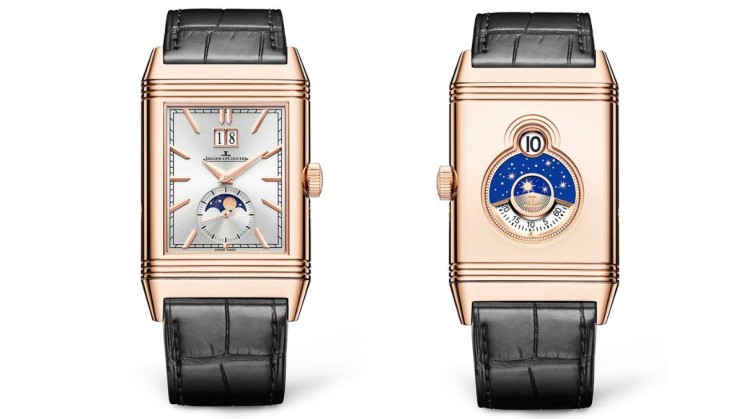
De Bethune DB28 Digitale
The DB28 Digitale embodies De Bethune’s futuristic vision with a bold horological architecture. It blends a jumping hour display at 12 o'clock with analog minutes on a rotating disc, and an artistic moon phase using a palladium and flame-blued steel sphere. The polished titanium case measures 45 mm, offering wrist presence without sacrificing comfort—thanks to De Bethune’s patented floating lugs that adapt naturally to the wrist. The watch is powered by the DB2144 caliber with a 5-day power reserve.
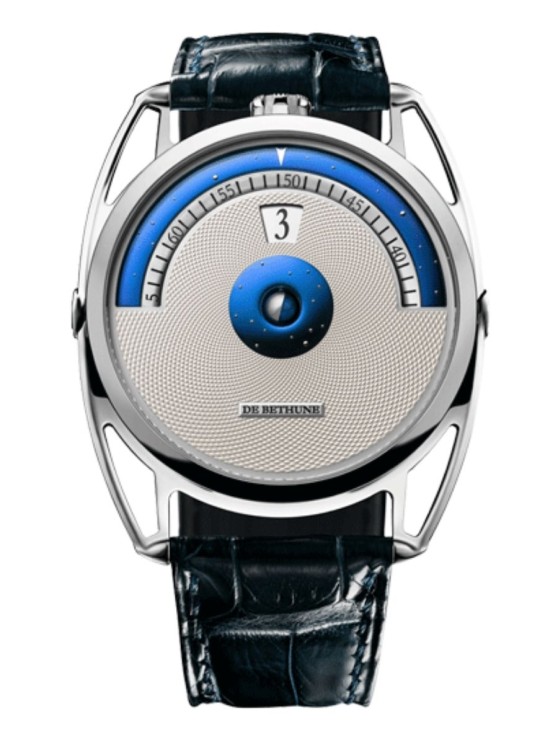
IWC Tribute to Pallweber
The IWC Tribute to Pallweber revives the digital pocket watch concept pioneered by Austrian watchmaker Josef Pallweber in 1884. Its jumping numerals display hours and minutes through two large, legible windows, with a small seconds disc at 6 o'clock. The lacquered dial—available in blue or white—recalls the vintage charm of enamel, while the 45 mm gold case nods elegantly to the watch’s pocket origins. The manual 94200 movement enables simultaneous jumping of the hour and minute discs. Carefully reimagined, this tribute brings back a brilliant concept long left in the shadows.
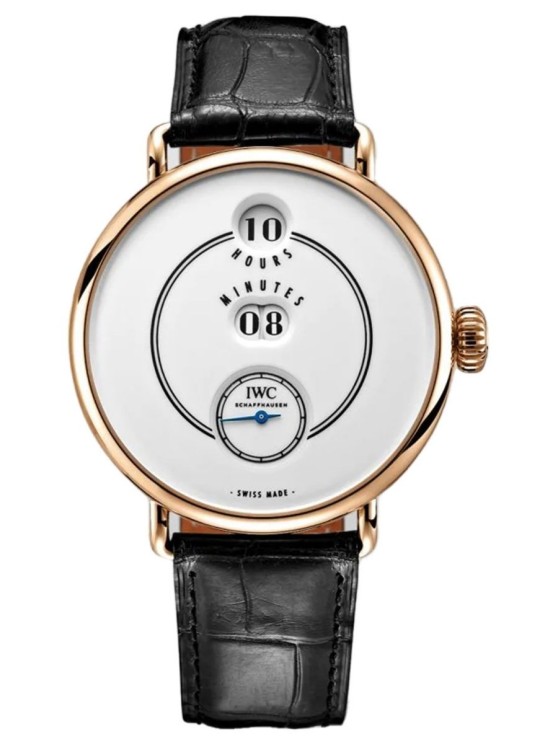
Guichet watches do more than just tell the time—they transform it into a poetic, graphic language. At the crossroads of design, mechanics, and history, these watches offer a unique reading of time. Rare, often daring, always captivating. Whether you’re drawn to the purity of Cartier, the extravagance of De Bethune, or the discipline of IWC, the digital window remains a singular canvas for the most creative watchmakers.
